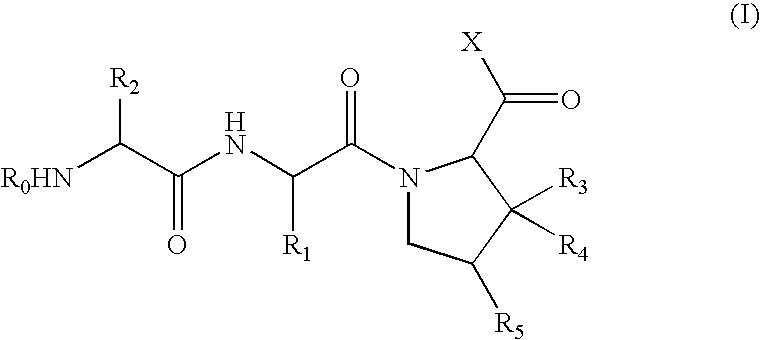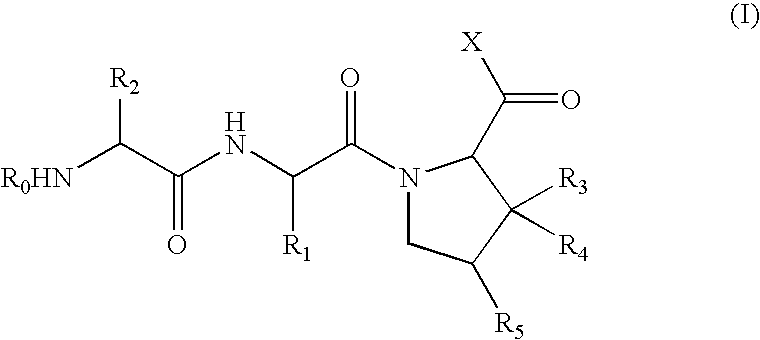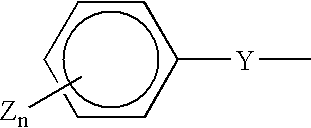Tripeptide derivatives for the treatment of neurodegenerative diseases
a neurodegenerative disease and tripeptide technology, applied in the direction of tripeptide ingredients, tetrapeptide ingredients, dipeptide ingredients, etc., can solve the problems of brain damage, brain damage, brain damage, etc., and achieve the effect of reducing the number of neurodegenerative diseases, and improving the quality of li
- Summary
- Abstract
- Description
- Claims
- Application Information
AI Technical Summary
Benefits of technology
Problems solved by technology
Method used
Image
Examples
Embodiment Construction
[0019] If not indicated otherwise, the amino acid residues may be present both in the D-form as well as the L-form, the L-form being preferred.
[0020] Preferred are compounds of the formula (I) in which R1 is a residue derived from the amino acid Ile or one of the amino acids Phe, Tyr, Trp, which each may be optionally substituted with one or more (C1-5)alkoxy groups, (C1-5)alkyl groups or one or more halogen atoms, particularly a residue which is derived from Ile or Phe which is optionally substituted with one or more (C1-5)alkoxy groups, (C1-5)alkyl groups or one or more halogen atoms.
[0021] In formula (I), X is preferably (C1-5)alkoxy, NH2, NH—(C1-5) alkyl or N(C1-5alkyl)2, more preferred are NH2, NH(C1-3) alkyl and N(C1-3 alkyl)2. [0022] R2 is preferably a residue derived from the amino acid Gly or Ile. [0023] R3 and R4 preferably independently from each other represent H, (C1-5)alkyl or (C1-5)alkoxy, provided that R3 and R4 are not (C1-5)alkoxy, more preferred are H, (C1-3)alk...
PUM
| Property | Measurement | Unit |
|---|---|---|
| molecular weight | aaaaa | aaaaa |
| volume | aaaaa | aaaaa |
| time | aaaaa | aaaaa |
Abstract
Description
Claims
Application Information
 Login to View More
Login to View More - R&D
- Intellectual Property
- Life Sciences
- Materials
- Tech Scout
- Unparalleled Data Quality
- Higher Quality Content
- 60% Fewer Hallucinations
Browse by: Latest US Patents, China's latest patents, Technical Efficacy Thesaurus, Application Domain, Technology Topic, Popular Technical Reports.
© 2025 PatSnap. All rights reserved.Legal|Privacy policy|Modern Slavery Act Transparency Statement|Sitemap|About US| Contact US: help@patsnap.com



